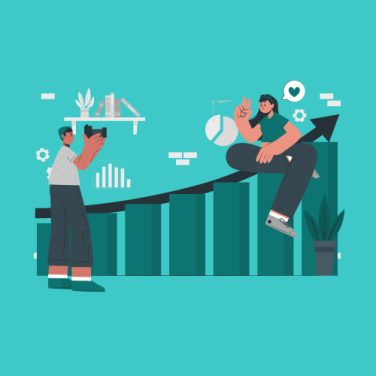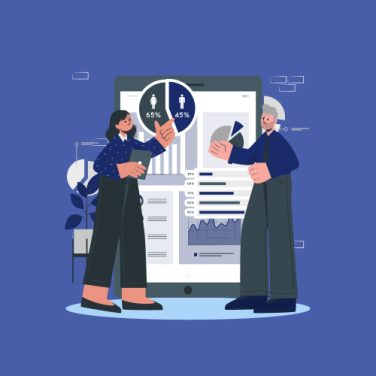Digital HR transformation reimagines human resources by digitising and re-engineering end-to-end processes. It spans recruitment, onboarding, payroll, performance management and analytics.
Powered by cloud HRIS platforms, artificial intelligence, mobile access, and self-service portals, this shift drives strategic insights, operational efficiency, and enhanced employee engagement.
- Definition: Complete digitisation and automation of HR workflows from hire to retire.
- Scope: Recruitment and applicant tracking, onboarding automation, payroll and benefits administration, performance reviews, and workforce analytics.
- Drivers: Cloud-based HRIS, AI-powered chatbots and predictive analytics, mobile-first self-service applications.
- Goal: Faster processes, fewer manual errors, better compliance, and an improved employee experience.
Key takeaways
- Digital HR transformation blends technology adoption, process redesign, and culture change to modernise HR functions.
- Top benefits include streamlined workflows, data-driven decisions, enhanced employee engagement, and scalable compliance.
- Major challenges involve unclear objectives, skill gaps, resistance to change, and data integration issues.
- A strategic roadmap covers process evaluation, objective setting, phased deployment of tools, continuous measurement, and optimisation.
Why digital transformation is crucial for HR
Shifting expectations: Modern employees expect flexibility, instant access to HR services and mobile-friendly tools. Traditional paper-based or email-driven processes fall short of demands for real-time updates on leave balances, benefits enrolment, and performance feedback.
Digital transformation in HR delivers self-service portals and on-the-go mobile applications, empowering staff to manage personal data and requests anytime, anywhere. In turn, HR teams redirect effort from admin tasks to strategic initiatives.
From admin to strategic: By automating routine workflows – such as candidate screening via an ATS, onboarding checklists, and approval processes – HR shifts from transactional work to partnership with business leaders.
Predictive analytics help forecast talent gaps, optimise workforce planning and improve retention. Automated compliance ensures audit trails for regulatory requirements, mitigating risk across multi-jurisdiction payrolls and benefits programmes.
In a competitive marketplace, digital transformation of HR becomes a differentiator for talent acquisition, employer branding, and operational agility.
Key benefits of digital HR transformation
- Improved employee experience: Self-service portals and mobile apps give staff direct control over leave requests, benefits enrolment, and contact updates. AI-driven chatbots answer common questions 24/7, reducing wait times and support tickets. Personalised onboarding journeys engage new hires from day one.
- Efficiency and productivity: Automated workflows cut manual data entry, eliminate paper forms, and streamline approvals. MiA and SmartAssist from MiHCM, for example, saves hours of HR administrative work each week.
- Data-driven decisions: Dashboards and predictive analytics in MiHCM Data & AI provide insights into turnover trends, training impact, and talent pipeline health. When HR teams access real-time metrics, they align workforce strategies with business objectives and invest in high-impact initiatives.
- Compliance and security: Role-based access controls and audit trails ensure data privacy and regulatory adherence. Automated notifications flag contract renewals, policy changes, and certification expirations. Centralised records simplify global payroll management and statutory reporting.
Challenges and barriers in digital HR transformation
- Unclear objectives: Without defined goals and KPIs, transformation projects risk misalignment with organisational priorities.
- Skill gaps: HR teams require digital literacy, change management expertise and data analysis capabilities to leverage new tools.
- Resistance to change: Legacy systems and entrenched processes can hinder adoption. Securing user buy-in demands clear communication and training plans.
- Data quality and integration: Inconsistent or siloed HR data slows analytics and automation. Integration frameworks and APIs must unify disparate systems.
- Ethical and privacy concerns: AI in HR introduces bias risks and requires robust data governance policies to ensure fairness and compliance.
Managing AI ethics and privacy
Effective digital HR transformation includes AI usage guidelines, impact assessments, and transparent decision models.
Organisations should implement data encryption, consent management, and regular audits to maintain employee trust.
Step-by-step strategic roadmap for digital HR transformation
Phase 1: Assessment and vision
- Process audit: Map current HR workflows, technologies, and pain points across recruitment, onboarding, payroll, and performance management.
- Stakeholder alignment: Gather input from executives, HR staff, and employees to define strategic objectives and success metrics (e.g., time-to-hire, NPS).
- Technology gap analysis: Identify missing capabilities—such as self-service, analytics, or chatbots—and prioritise based on ROI potential.
Phase 2: Planning and roadmap
- Define objectives and KPIs: Set SMART goals for efficiency gains, employee satisfaction scores, and cost reductions.
- Build phased timeline: Establish milestones for pilot deployments, full rollouts, and performance reviews, ensuring iterative value delivery.
- Change management plan: Develop training, communication, and incentives to drive adoption. Leverage internal champions and hands-on workshops.
- Vendor and tool selection: Evaluate platforms—MiHCM Lite for small teams, MiHCM Enterprise for global payroll, SmartAssist for automation, MiHCM Data & AI for analytics, and MiA for virtual assistance.
Phase 3: Deployment and scaling
- Pilot launch: Implement core modules in a single business unit to test integrations, data flows, and user experience.
- Iterate and optimise: Collect user feedback, address issues, and enhance configurations. Use analytics to track adoption rates and process efficiency.
- Full rollout: Scale across departments and regions. Monitor performance against KPIs, adjusting training and support as needed.
- Continuous improvement: Schedule regular reviews, explore emerging HR technologies and refine the roadmap to maintain momentum and drive innovation.
Essential digital HR transformation tools and technologies
Choosing the right mix of tools
| Category | Solution | Capability |
|---|---|---|
| Core HRIS | MiHCM Enterprise and Lite | Employee data management, payroll, compliance, talent acquisition |
| Workflow Automation | SmartAssist | Automated approvals, notifications, repetitive task workflows |
| Analytics & AI | MiHCM Data & AI | Predictive insights, dashboards, workforce planning analytics |
| Virtual Assistant | MiA | Chat-based self-service, FAQs, meeting scheduling |
| Integration | APIs & Connectors | Data synchronisation across HR systems and third-party apps |
Stages of digital HR transformation
- Stage 1: Business as usual – Manual, siloed HR processes relying on spreadsheets and paper forms.
- Stage 2: Present and active – Initial pilots of digital tools, basic automation, and limited analytics use.
- Stage 3: Formalised – Standardised HRIS implementations, consistent workflows, and centralised data repositories.
- Stage 4: Strategic – HR strategy aligned to business goals, driven by predictive analytics and KPI dashboards.
- Stage 5: Converged – Integrated platforms deliver omnichannel employee experiences across mobile and web.
- Stage 6: Innovative and adaptive – Continuous innovation with AI-driven personalisation, real-time insights and agile process iterations.
Measuring success: Key metrics and ROI
Defining your HR KPIs
- Time to hire: Reduction in days from requisition to acceptance.
- Cost per hire: Total recruiting spend divided by number of hires.
- Employee engagement and NPS: Scores and feedback indicating satisfaction with HR services.
- Turnover and retention: Percentage change in voluntary and involuntary attrition rates.
- Process cycle times: Onboarding completion times and approval turnaround rates.
- HR cost savings: Efficiency gains from automation, headcount optimisation and reduced manual workload.
Future trends and innovations in digital HR transformation
- AI and ML personalisation: Hyper-personalised learning and career development recommendations powered by machine learning.
- Digital adoption platforms: In-app guidance and tutorials to accelerate HR tech uptake and reduce support costs.
- Blockchain credentialing: Secure, verifiable certificates for skills, compliance training, and background checks.
- Well-being monitoring: Real-time pulse surveys and analytics to track employee morale, burnout risk and wellness programme effectiveness.
- Hybrid work management: Workspace reservation, geofencing and flexible scheduling tools to optimise office utilisation.
Your roadmap to HR modernisation
- View digital transformation as an ongoing journey: start small, iterate, and scale based on results.
- Leverage MiHCM’s suite—Lite, Enterprise, Data & AI, MiA, and SmartAssist—to automate workflows, unlock real-time insights, and empower employees.
- Define clear goals, pilot in a focused area, measure ROI, and expand strategically across HR functions.
- Stay ahead by embracing emerging innovations—AI personalisation, digital adoption platforms, and hybrid work tools—for continuous improvement.
Frequently asked questions
What is digital HR transformation?
It’s the strategic integration of digital tools—such as HRIS, analytics, automation, and AI—to streamline HR functions and improve decision-making.



